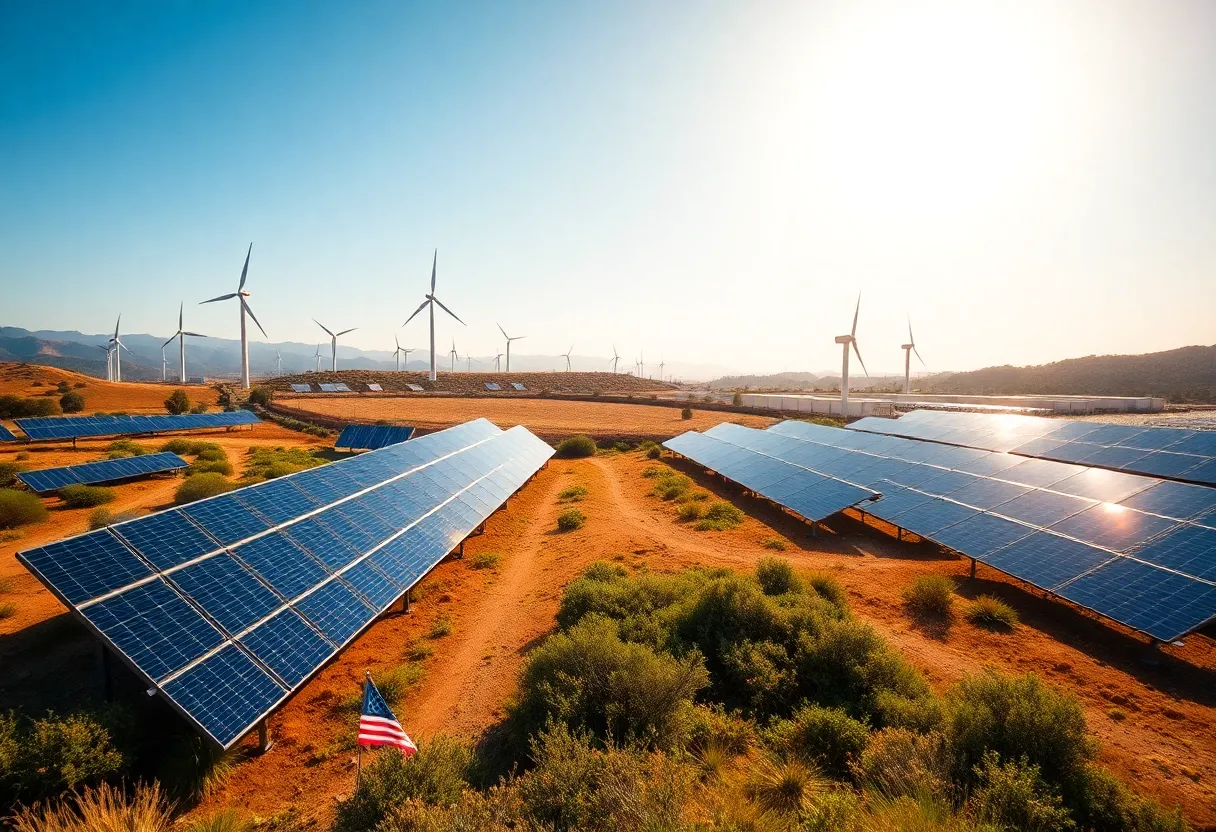News Summary
California has reached a significant milestone, with clean energy sources making up 67% of its retail electricity supply in 2023, a rise from 61% in 2022. Despite this achievement, California residents face some of the highest electricity prices in the country. The state aims for 100% renewable and carbon-free electricity by 2045, but concerns remain about economic feasibility and the impact of federal policy changes on clean energy technologies. Overall, the growth in renewable energy highlights California’s leadership while navigating challenges.
California has marked a significant achievement in renewable energy, with clean energy sources comprising 67% of its retail electricity supply in 2023, as reported by the California Energy Commission. This marks an increase from 61% in 2022 and surpasses the prior record of 64% established in 2019. The state continues its commitment to its ambitious goal of reaching 100% renewable and carbon-free electricity by 2045, a target set under a law enacted in 2018 by former Governor Jerry Brown.
Clean energy comprises a diverse range of sources, including solar, wind, geothermal, large hydropower, biomass, and nuclear energy. The progress made towards clean energy has been celebrated by officials, who note that achieving two-thirds of the energy supply from clean sources was once deemed unrealistic. Governor Gavin Newsom has highlighted California’s position as the world’s fourth-largest economy using predominantly clean power, which emphasizes the state’s leadership in energy transformation.
While the achievement is commendable, California residents are facing some of the highest electricity prices in the nation. As of April 2023, the average retail electricity price was reported at 31.77 cents per kilowatt-hour, nearly double the national average of 17.45 cents. Critics, particularly political opponents, have cited these high costs as a point of concern, noting that efforts to enhance clean energy infrastructure and reduce wildfire risks contribute to increasing utility expenses.
Public support for clean energy remains robust in California, with 66% of voters in favor of the state law mandating 100% clean energy by 2045. However, the high cost of energy has sparked debates about the sustainability and economic impact of such ambitious goals. Analysts suggest that several factors are affecting electricity costs, including state initiatives to improve wildfire safety and the financial burden associated with upgrading utility infrastructure.
Advancements in battery storage technology have played a crucial role in supporting California’s clean energy initiatives. The state has seen a remarkable growth in battery storage capacity, escalating from 1,474 megawatts in 2020 to 15,763 megawatts in 2023. This development is essential for accommodating the variable nature of renewable energy supply and meeting electricity demand. Furthermore, California’s electricity demand is expected to rise significantly due to the increasing popularity of electric vehicles, which represented 25% of new car sales in the state.
Despite these positive developments in renewable energy, there are ongoing concerns regarding future growth and sustainability. Recent federal legislative actions have rolled back various tax incentives designed to support clean energy technologies, including solar and wind power, as well as electric vehicles. This could have implications for investment and job growth within California’s clean energy sector, signaling potential challenges ahead.
To meet its growing electricity demands and to support clean energy objectives, California is facing a projected requirement of 52,000 megawatts of battery storage by 2045. As the state strives towards these ambitious clean energy goals, the balance between sustainable energy practices and economic viability will remain a critical discussion point for policymakers and residents alike.
In summary, California’s rise to a 67% clean energy milestone signifies a pivotal step towards reducing carbon emissions and enhancing renewable energy usage. However, the associated high electricity costs and federal policy shifts are factors that will require ongoing assessment and strategic responses from state leaders and the energy sector.
Deeper Dive: News & Info About This Topic
- Mercury News: California Reaches New Record Clean Energy Milestone
- Wikipedia: Renewable Energy in California
- LAist: California’s Wind and Solar Projects Face New Federal Hurdles
- Google Search: Clean Energy California
- Newsweek: California Hits Historic Energy Milestone
- Google Scholar: California Clean Energy Milestone
- The Hill: California Power Grid Clean Energy Milestone
- Encyclopedia Britannica: Renewable Energy
- San Diego Union Tribune: Newsom Boasts of California Clean Energy Milestones
- Google News: California Clean Energy

Author: STAFF HERE HOLLYWOOD
The Hollywood Staff Writer represents the experienced team at HEREHollywood.com, your go-to source for actionable local news and information in Hollywood, Los Angeles County, and beyond. Specializing in "news you can use," we cover essential topics like product reviews for personal and business needs, local business directories, politics, real estate trends, neighborhood insights, and state news affecting the area—with deep expertise drawn from years of dedicated reporting and strong community input, including local press releases and business updates. We deliver top reporting on high-value events such as the Hollywood Bowl summer concerts, the Hollywood Christmas Parade, film premieres at TCL Chinese Theatre, and festivals at the Magic Castle. Our coverage extends to key organizations like the Hollywood Chamber of Commerce and Visit Hollywood, plus leading businesses in entertainment, dining, and tourism that define the local economy. As part of the broader HERE network, including HERELosAngeles.com, HEREBeverlyHills.com, HEREAnaheim.com, and HEREHuntingtonBeach.com, we provide comprehensive, credible insights into Southern California's dynamic landscape.





